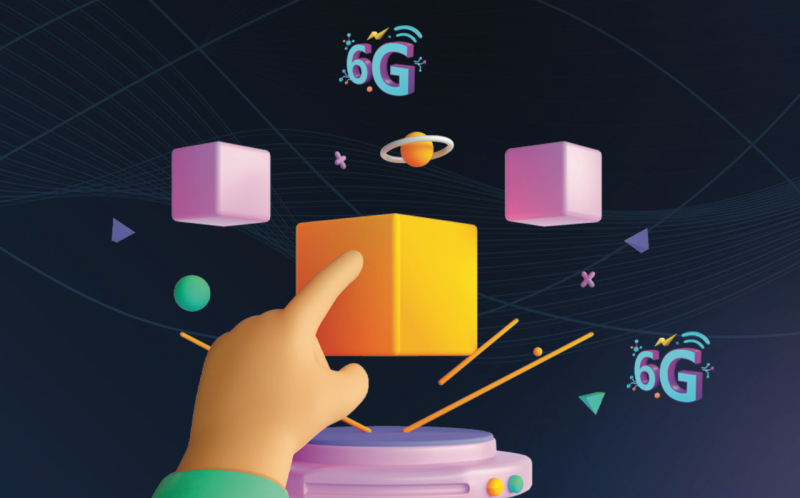
What is a Smart City?
The term “smart city” is very broad and can take on a multitude of meanings that incorporate technology, sustainability, infrastructure, and data. Let’s dive deeper into what smart cities are and how they impact the people that live in them.
Defining a Smart City
Alexander Mayo, senior audiovisual, acoustic, and ventures consultant at Arup, said that smart cities collect data and analyze it to streamline public services and communication.

A truly smart city will provide equal access to its services, according to Beck.
“A city can be deemed ‘smart’ when it uses technology and data to improve the quality of life for citizens by acting upon the data captured in a holistic, consistent, and robust manner,” he said.
According to a 2017 study by Bhagya Nathali Silvaa, Murad Khanb, and Kijun Hana, smart cities are an application of the IoT (Internet of Things) and emerged as a solution to overpopulation and rapid urbanization.
Ernie Beck, associate principal at NV5 Engineering & Technology, believes smart cities start with strong, forward-thinking leaders. “A true smart city creates an equitable city for all communities through the thoughtful planning of infrastructure, data, digital technologies, and essential services,” he said.
What Makes Up a Smart City?
Smart cities have three distinct layers. The infrastructure layer is composed of the physical buildings, broadband internet access, transportation, and everything else that keeps a normal city running.
The sensory layer is how all the data gets collected. Wireless sensor networks (WSN), smart devices, and other sensing devices comprise this layer to compile data for different applications. “Data is the secret to unlocking the potential of a city,” Beck said.
Watch the video below to learn more about wireless sensor networks in smart cities from Libelium.
The previously mentioned 2017 study insists this layer is the most important because it controls the rest of the operations of a smart city—but also the most difficult because of the large amounts of diverse data.
The processing layer is what really makes a city smart. The collected data has to be managed and analyzed through computing power, data centers, the cloud, etc., and then applied to city functions.
Beck gave the example of a bus route that uses smart city technology to function more efficiently. When a bus is equipped with GPS positioning, it can send real-time data over 5G with its location, wait time, and capacity to improve rider experience. The three layers of a smart city interact here to enhance a city service.
“Each of these layers are the backbone to a well-functioning smart city, and when done correctly are all near invisible to the inhabitants of the city,” Mayo said.
Smart City Examples
Singapore, according to the Institute for Management Development, is considered the smartest city in the world. Their Smart Nation Program has a vision of a digital-first city with a digital government, economy, and society.

“Singapore is a nation where we can create possibilities for ourselves beyond what we imagined possible,” according to Prime Minister Lee Hsien Loong. Image Courtesy of SmartNation.gov.
The city uses technology like smart sensors, digital identity, e-payments, and smart urban transportation to drive adoption of smart city initiatives within Singapore.
Zurich, which ranks second behind Singapore, has implemented projects such as a rideshare program, an energy network, and a city-wide IoT network to make the city smarter.
Arup Ventures has created some technologies for smart cities such as Acorn, an example of a smart city solution that uses RFID technology to improve the transportation industry. Mayo said Acorn uses real time data to advance rail controls and signaling and provide accurate data on train location, speed, and route conditions.
Benefits of Smart Cities
At their core, smart cities aim to improve quality of life for residents and make cities more equitable and sustainable. Beck said smart city technology can make a city safer, more easily navigable, energy efficient, and accessible.

Smart city technology goes hand-in-hand with sustainability efforts.
City workers can optimize resource management such as water and electricity use to identify inefficiencies and minimize the use of scarce resources. Additionally, smart cities can monitor water and air quality to protect the health of their residents.
Amsterdam, for example, launched its “Amsterdam Smart City” program in 2009. At the time, it set a goal of reducing its CO2 emissions by 40% by 2025; the city says it is utilizing cutting-edge technologies in order to meet its environmental goals. As part of this initiative, the city installed smart meters that allow residents to measure and regulate their energy consumption in real time. It also set up smart work centers and co-working spaces throughout the city, which has lowered everyday commuting emissions.
In situations like this, Mayo said citizens should have access to data collected within the city so they can understand and evaluate city decisions. “In order to see these benefits, transparency and equity must be at the heart of the smart city,” he insisted.
Limitations of Smart Cities
Although smart cities seem like the ideal situation, there are some limitations and difficulties associated with them.

One of the downsides to smart cities is the ever-present threats by hackers.
“Any time you have an increase in data transparency you are opening the door for cyber security threats,” Beck said. Personal privacy and security are a big concern for residents and data capture in the public realm presents real risks for them.
Another concern is the cost. Smart city technology, design, and maintenance are expensive and can pose a huge barrier to entry for cities.
Associated with cost is the concern of accessibility. “The technology is not always rolled out equally across a city, many times low income or marginalized communities can be the last to receive the benefits or unable to access due to the requirement of expensive technologies,” Mayo said.
The largest limitation of smart cities is the lack of a cohesive digital strategy when implementing smart city technology. Smart cities consist of many different sensors, devices, etc., and it is difficult to integrate the diverse smart technologies.
“The benefits are only seen when there is a unified data aggregator that can interface with all of the data gathered from the sensor stacks,” Mayo said.
The Future of Smart Cities
Both Beck and Mayo said they expect smart cities to look very similar in the future, at least from the outside. However, Beck said he hopes to see smart cities be more in tune with human needs.
“I hope that technology will allow for the improvement of management and government services that operate within the city,” Mayo concluded. “When connected sensors become ubiquitous and advanced analytics or AI are available to process and interpret the data, we will see highly connected cities that can be designed with the needs of all residents in mind.”
Editor’s Note: For those who are interested in learning more about how to make buildings and cities smarter, Ernie Beck will be hosting a virtual class “Building Technology Fundamentals: Retrofit and Design Applications for Wellness, Efficiency, and Flexibility” in March.








2 thoughts on “What is a Smart City?”